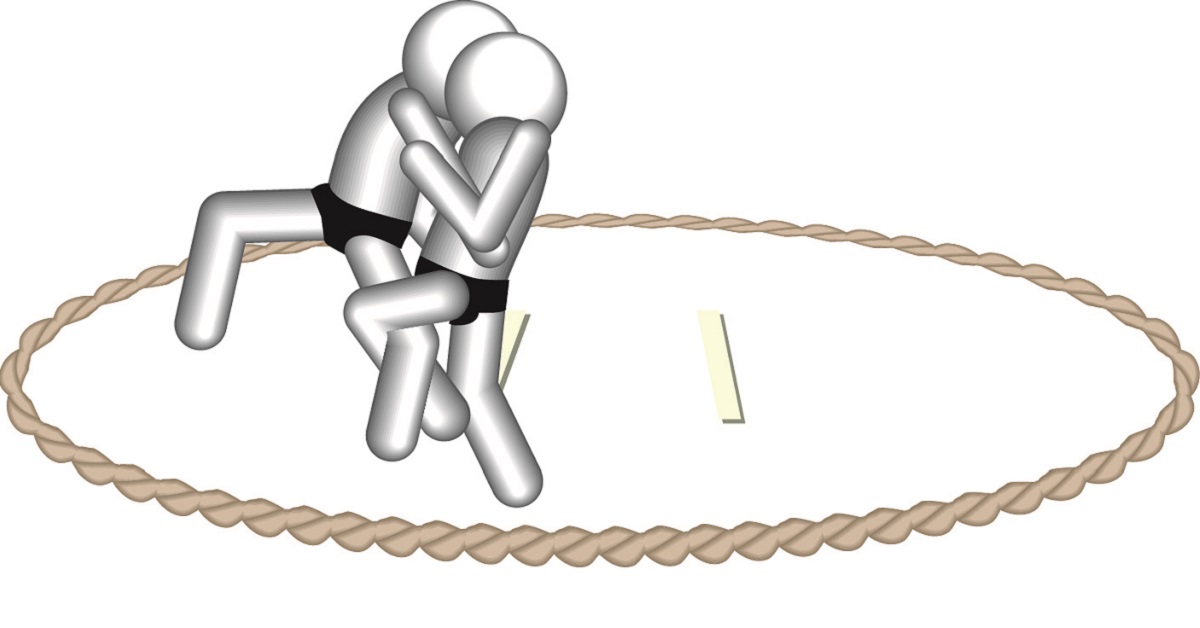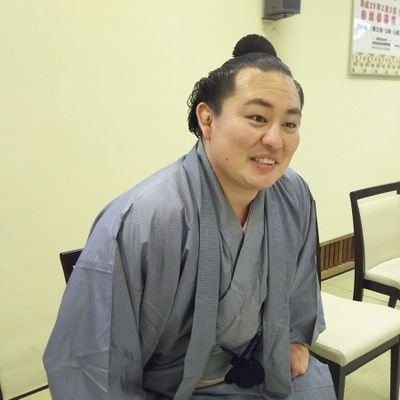Kawazu-gake is one of the most refined techniques in sumō, a move where victory is achieved not by strength but by skill and flow. Combining precision, balance, and calm focus, it embodies the spiritual essence of Japanese martial arts, showing that true power lies in harmony, not force.
- What Is Kawazu-Gake
- Basic Motion and Key Points of Kawazu-Gake
- Historical Background of Kawazu-Gake
- The Beauty and Appeal of Kawazu-Gake
- Comparison with Other Hooking Techniques
- Learning Kawazu-Gake for Beginners
- Physical Abilities Required for Kawazu-Gake
- Why Foreign Audiences Appreciate Kawazu-Gake
- The Essence of Kawazu-Gake
- Conclusion
What Is Kawazu-Gake
Kawazu-gake is known as a hybrid technique that blends a leg hook with a throw. The wrestler hooks his leg around the opponent’s thigh, pivots his body, and twists backward to topple the opponent. The name comes from Kawazu Sukeyasu, a samurai from the Kamakura period who was said to have mastered this move.
| Item | Description |
|---|---|
| Technique type | Hooking and throwing technique |
| Main motion | Hook opponent’s leg and twist backward |
| Origin of name | Samurai Kawazu Sukeyasu’s specialty |
| Classification | Official winning technique in professional sumō |
This move requires split-second timing, body coordination, and fluid motion. It is not simply about strength but embodies the philosophy of “winning through skill and awareness.”
Basic Motion and Key Points of Kawazu-Gake
In Kawazu-gake, the wrestler grips the opponent, hooks a leg around the opponent’s thigh, and uses a twist of the hips combined with an arm pull to break balance and throw the opponent backward. Every moment matters, and maintaining core stability is essential.
| Element | Description |
|---|---|
| Leg hook | Deeply entangle the opponent’s thigh to prevent slipping |
| Hip twist | Rotate around your pivot leg to break the opponent’s stance |
| Arm motion | Pull the opponent’s torso backward to shift his center of gravity |
The key is not to push forcefully but to guide the opponent’s energy. Kawazu-gake succeeds when the wrestler flows with the opponent’s movement instead of resisting it—using harmony rather than brute force.
Historical Background of Kawazu-Gake
Kawazu-gake originated as a combat technique among samurai. Kawazu Sukeyasu used this move both in battle and in sumō demonstrations, and his skill impressed others so deeply that the move took his name.
| Era | Development |
|---|---|
| Heian period | Practiced among samurai as martial training |
| Kamakura period | Kawazu Sukeyasu popularized the move |
| Edo period | Formalized as an official sumō technique |
| Modern era | Recognized and preserved by the Japan Sumō Association |
Over time, Kawazu-gake became more than a fighting move—it became a symbol of Japanese martial elegance and discipline, embodying both practicality and grace.
The Beauty and Appeal of Kawazu-Gake
The greatest charm of Kawazu-gake lies in its lightning-fast execution. The opponent seems stable for a brief instant—then suddenly collapses. This contrast of stillness and explosive movement captivates audiences.
| Feature | Description |
|---|---|
| Speed | The move is executed in a fraction of a second |
| Aesthetics | Flowing, natural movement with perfect balance |
| Precision | Requires flawless timing to succeed |
| Symbolism | Represents Japan’s ideal of intellect over brute force |
Kawazu-gake is not merely about defeating the opponent—it’s about breaking balance through flow and timing. The wrestler’s ability to read the opponent’s rhythm and merge movement naturally reflects the harmony of Japanese martial philosophy.
Comparison with Other Hooking Techniques
Kawazu-gake differs from other hooking techniques such as uchigake (inside leg trip) or sotogake (outside leg trip). It is characterized by a combination of leg entanglement and rotational throw, which makes it a more complex technique.
| Technique | Feature | Difference from Kawazu-gake |
|---|---|---|
| Uchigake | Hooks inside the opponent’s leg | Has less hip rotation |
| Sotogake | Hooks from outside to topple opponent | Linear, without a twisting motion |
| Kawazu-gake | Combines hook and throw | Uses full-body motion with rotation |
Thus, Kawazu-gake is a sophisticated hybrid technique, combining the control of hooking and the power of throwing into one seamless movement.
Learning Kawazu-Gake for Beginners
For beginners, safety and foundation training are essential. The focus should be on flexibility, body coordination, and proper falling techniques before attempting the move in full speed.
| Training Focus | Description |
|---|---|
| Flexibility | Increase hip and lower back mobility |
| Ukemi (falling technique) | Learn safe ways to absorb impact |
| Timing | Develop sensitivity to the right moment for the hook |
| Coordination | Synchronize hips and arms through repetition |
Through patient practice, wrestlers develop core stability and precise control of body balance, which are vital not only for Kawazu-gake but for all sumō techniques.
Physical Abilities Required for Kawazu-Gake
Kawazu-gake demands more than size or strength—it relies on three fundamental attributes: power, flexibility, and balance.
| Attribute | Description |
|---|---|
| Strength | Power from the hips and thighs to maintain posture |
| Flexibility | Smooth hip rotation without strain |
| Balance | Low center of gravity and control over weight shifts |
Because the move relies heavily on rotation and timing, training the body’s core and equilibrium through daily keiko (practice) is essential for mastering the technique.
Why Foreign Audiences Appreciate Kawazu-Gake
To many foreign viewers, sumō appears as a contest of raw power. However, Kawazu-gake reveals the Japanese emphasis on reason, flow, and aesthetic form. The move is conceptually similar to jūdō’s “Ōuchi-gari” or “Harai-goshi”, making it easier for martial artists abroad to appreciate.
When Kawazu-gake is successfully executed, the silent build-up followed by the crowd’s roar highlights the artistry of controlled energy and precision. It represents the harmony of strength and beauty that defines Japanese culture.
The Essence of Kawazu-Gake
The true essence of Kawazu-gake lies in mastering the flow rather than resisting it. Victory is achieved not by overpowering the opponent, but by redirecting his energy.
| Element | Description |
|---|---|
| Timing | Act at the moment the opponent’s balance shifts |
| Coordination | Unite hips, legs, and arms into one fluid motion |
| Calmness | Maintain your own axis without being pulled off balance |
This philosophy mirrors that of jūdō and aikidō, where the goal is to win through natural movement and harmony. In Kawazu-gake, “effortless control” becomes the ultimate demonstration of mastery.
Conclusion
Kawazu-gake represents the fusion of physical skill, strategy, and spiritual balance that defines Japanese martial culture. The sequence—hooking, twisting, and throwing—embodies not only physical control but also mental clarity and aesthetic beauty.
Understanding this technique allows us to see sumō not just as a contest of strength, but as an art of movement and mind. For both beginners and international fans, learning about Kawazu-gake opens a window into the depth of Japanese tradition and philosophy.
Kawazu-gake is rational beauty in motion—its harmony between stillness and dynamism is the true spirit of sumō.





コメント